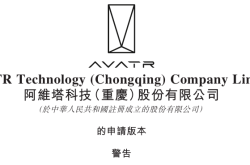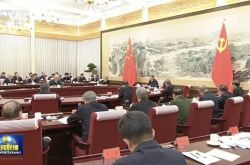Middle Eastern Tycoons Invest $7 Billion, Ushering in a Wave of Wealth Creation in the Low-Altitude Economy
![]() 08/04 2025
08/04 2025
![]() 499
499
Preface: When Shanghai's Times Technology sealed a massive order for 350 eVTOLs (Electric Vertical Take-Off and Landing aircraft) with the UAE's Autocraft, the $1 billion deal not only set a new industry benchmark but also signaled the quiet arrival of a wealth creation wave in the low-altitude economy. From the accelerated expansion of domestic enterprises to the influx of international capital, this once untapped "blue ocean in the sky" is emerging as a new growth frontier for the global economy.
Author | Fang Wensan
Explosive Growth from Concept to Reality
The rise of the low-altitude economy is not fortuitous but the culmination of technological advancements and market demands.
According to research, by 2025, 3,000 flying cars will be deployed globally for air taxis and airport shuttles, soaring to 98,000 by 2050. Morgan Stanley predicts the industry's global market size will reach $300 billion by 2030 and surge to $1.5 trillion by 2040.
On the capital front, the industry's heat continues to intensify. Times Technology, established just four years ago, has completed six funding rounds, attracting investors like BlueRun Ventures and Zifeng Capital. XPeng Huitian also announced the completion of a $250 million Series B funding round, with its flying car factory set to be completed in Q4 2024 and mass production deliveries expected in 2026. Traditional automakers like Geely, GAC, and Changan are also actively expanding into this field, propelling the low-altitude economy from niche to mainstream.
Establishment of Times Technology
Founded in May 2021, Times Technology celebrated its fourth anniversary recently. This youthful eVTOL enterprise has undergone six funding rounds, attracting both domestic and overseas investors.
Founder Huang Yongwei holds an MBA from the University of Western Australia and a First Class Honors Bachelor's degree in Aerospace Engineering from Royal Melbourne Institute of Technology, with over 20 years of experience in aviation aircraft R&D and management. Before founding Times Technology, Huang served as Chief Engineer at Airbus China Engineering Center, responsible for the A350 wide-body aircraft development and as an Appointed Representative at EASA. He was also the General Manager of Terrafugia China, overseeing the 1.2-ton eVTOL aircraft project.
Since its inception, Times Technology has focused on the R&D, production, and sales of tilt-rotor manned eVTOLs, targeting the tourism and short-haul travel markets within 30 to 150 kilometers.
Technological Breakthroughs Bring Low-Altitude Travel to Life
Times Technology's E20 eVTOL, featuring a tilt-rotor configuration, boasts a 12-meter wingspan, 200-kilometer range, a maximum speed of 320 kilometers per hour, and can carry one pilot and four passengers with a payload of 450 kilograms. Crucially, its five-blade propeller design reduces vertical take-off and landing noise to 70 decibels (equivalent to a regular car), overcoming a significant hurdle for urban applications.
Efficiency gains are substantial—a journey from Shanghai Hongqiao Airport to Suzhou Oriental Gate takes 80 minutes by ground transportation but only 18 minutes by E20. However, challenges remain, including flight route planning, supporting facility construction, and regulatory policy improvements. The era of personal eVTOL use is still on the horizon.
Currently, local governments are the primary drivers of the low-altitude economy. With progress in airworthiness certification (e.g., E20 entering compliance verification with mass production expected in 2027), the foundations of a low-altitude transportation network are gradually being laid.
Why do Middle Eastern Tycoons Prefer China's Low-Altitude Economy?
It's no coincidence that the Middle East and North Africa have become key markets for China's eVTOLs.
Upon deployment, these 350 E20s will primarily serve local low-altitude tourism and air travel, backed by multiple factors. First, Chinese enterprises' technological prowess has gained international recognition. Times Technology's E20, with its superior performance in endurance, load capacity, and noise control, meets the Middle East's demand for high-end travel and tourism experiences.
Second, China has a significant first-mover advantage in the cross-border field of new energy and aviation. With the increasing penetration of domestic new energy vehicles and the maturation of pure electric drive technology, a solid foundation has been laid for eVTOL development. Compared to traditional aviation powers, Chinese enterprises are more agile in "electrification + aviation" fusion innovation, offering products that better align with emerging market scenarios.
Furthermore, the Middle East's development needs are a critical driving force. As a globally popular tourist destination, the region has a strong demand for efficient and high-end transportation. Low-altitude tourism and intercity rapid commuting scenarios are highly compatible with eVTOL application characteristics. Introducing China's mature eVTOL products can enhance regional transportation efficiency and invigorate the tourism industry.
Plans for the Low-Altitude Economy in Key Chinese Provinces and Cities
Beijing Industrial Goals:
Within three years, the number of low-altitude economy-related enterprises will exceed 5,000, forming a national leading demonstration in technological innovation, standard policies, application needs, security countermeasures, and other fields, driving the city's economic growth by over 100 billion yuan. By 2027, cultivate 10 leading enterprises with revenues of 1 billion yuan, 50 supporting enterprises in key industrial chain links with revenues exceeding 100 million yuan, and 100 technical service enterprises.
Shanghai Industrial Goals:
By 2027, establish a comprehensive industrial system for the R&D, final assembly and manufacturing, airworthiness testing, and commercial application of new low-altitude aircraft, creating a highland for low-altitude economic industry innovation, commercial application, and operation services, with a core industrial scale exceeding 50 billion yuan, leading global low-altitude economic innovation and development.
Guangdong Province Industrial Goals:
By 2026, the scale of the low-altitude economy will exceed 300 billion yuan, basically forming a low-altitude economic industrial pattern with Guangzhou, Shenzhen, and Zhuhai as the three cores, supported by multiple points and developing in clusters, cultivating a batch of leading enterprises and specialized and innovative enterprises, with steady growth in industrial scale. The province's general aviation aircraft flights will reach 150,000 hours, and progress will be made in pilot demonstrations in urban air transportation, low-altitude logistics, and all-space unmanned systems.
Zhejiang Province Industrial Goals:
By 2027, basically build a high-level civil aviation strong province and a highland for low-altitude economic development with aviation services covering the entire province, globally accessible route networks, convenient multi-modal airport hubs, highly concentrated aviation industries, pioneering leadership in the low-altitude economy, and smooth and efficient industry governance. Build more than 150 public drone take-off and landing sites covering the core areas of the four metropolitan areas, with general aviation routes reaching the Yangtze River Delta region, and drone logistics routes basically covering the core areas of the four metropolitan areas, achieving an annual low-altitude flight volume of 2 million hours. By 2035, fully build a high-level civil aviation strong province and a highland for low-altitude economic development.
Jiangsu Province Industrial Goals:
Strive to develop the city's low-altitude economic industry to exceed 50 billion yuan in scale through three years of construction. In the next three years, build more than 240 low-altitude aircraft take-off and landing sites (points) and supporting information infrastructure, establish more than 3 test flight sites and pilot training points, plan and construct 1 to 2 general airports, and open more than 120 low-altitude routes.
Shandong Province Industrial Goals:
By 2026, the province's low-altitude economic service and support level will be leading nationally, with world-class innovation capabilities, diverse application scenarios, and a significant leap in industrial energy level, making it an important source of innovation and development for the country's low-altitude economy. The low-altitude economic industry will become an important growth pole for the high-quality development of the province's economy. Cultivate more than 20 leading enterprises with revenues of 100 million yuan, more than 50 specialized and innovative enterprises, and more than 300 enterprises in the industry chain, forming a low-altitude economic industrial development pattern led by Jinan and Qingdao as the two cores, supported by Yantai, Dongying, Rizhao, and Binzhou as the four points.
Anhui Province Industrial Goals:
By 2025, accelerate the construction of low-altitude infrastructure, establish a batch of application demonstration scenarios, rapidly increase the scale and innovation capability of the low-altitude economy, and initially form a clustered industrial ecosystem; by 2027, further improve low-altitude infrastructure, continuously expand application scenarios, and achieve a leading national level in the scale and innovation capability of the low-altitude economy, forming a development pattern for the low-altitude economy with dual-core linkage, multi-point support, and clustered development.
Hunan Province Industrial Goals:
Fully unleash the reform momentum of low-altitude airspace management and strive to build a national demonstration province for the development of the low-altitude economy. Strive to have more than 20 enterprises above a certain size in the province's low-altitude economy field by 2025, with a total output value of the low-altitude economy reaching approximately 160 billion yuan.
Conclusion:
From Times Technology's overseas orders to XPeng Huitian's funding progress, Chinese low-altitude economy enterprises are accelerating their global expansion. This not only showcases technological exports but also demonstrates the advantages of China's industrial chain. With the continuous improvement of the industry ecosystem, the low-altitude economy is poised to become a new business card for China's intelligent manufacturing, occupying a pivotal position in the global transportation revolution.
Content Reference Sources:
Super Power Lab: Middle Eastern tycoons spend $7 billion to order China's "flying cars";
Securities Daily: Low-altitude economy application scenarios usher in a wave of "new" trends, accelerating the process of commercialization;
Low-Altitude Transportation and Economic Professional Committee: The current development status, industrial direction, policy guidance, industry pain points, and trends of China's low-altitude economy






